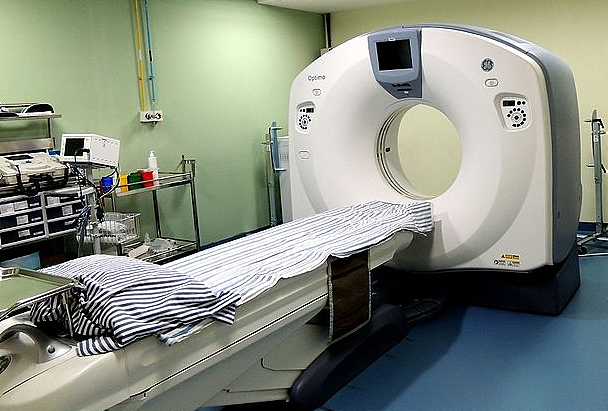
Leighton Hospital chiefs are set to spend £1.5 million on a third CT scanner as current capacity is “now exhausted”, writes Stephen Topping.
Mid Cheshire Hospitals NHS Foundation Trust, which runs the hospital serving Crewe and Nantwich, has approved the business case for the new scanner – which will be more advanced than the current two.
It is hoped the new equipment will meet growing demand at the hospital, and allow for better diagnosis when treating patients.
Mark Oldham, director of finance and strategic planning at MCHFT, said: “Introducing a third scanner will lead to a number of benefits to our patients.
“It will allow for improved images to be pictured, leading to a more effective diagnosis, and allow us to treat more patients.
“This will result in reduced waiting times and mean that patients will not have to travel to be scanned and treated.”
One of Leighton’s current scanners is in operation between 8.30am and 9pm, seven days a week, while the other operates 24 hours a day, seven days a week to meet current demand.
The £1.5 million cost of introducing a new scanner includes estates costs and the scanner itself.
Mr Oldham believes the investment will prove to be good value.
“Internal capacity is now exhausted and by 2020-21 the cost of outsourcing is expected to exceed the costs of an additional scanner,” he added.
CT scanners provide X-rays which are used to diagnose and monitor conditions such as cancer, strokes or bone damage.
They can also give doctors the guidance they need to determine if a patient needs any further tests or treatment.
(CT scanner – pic by Narenfox under creative commons licence)





















Recent Comments